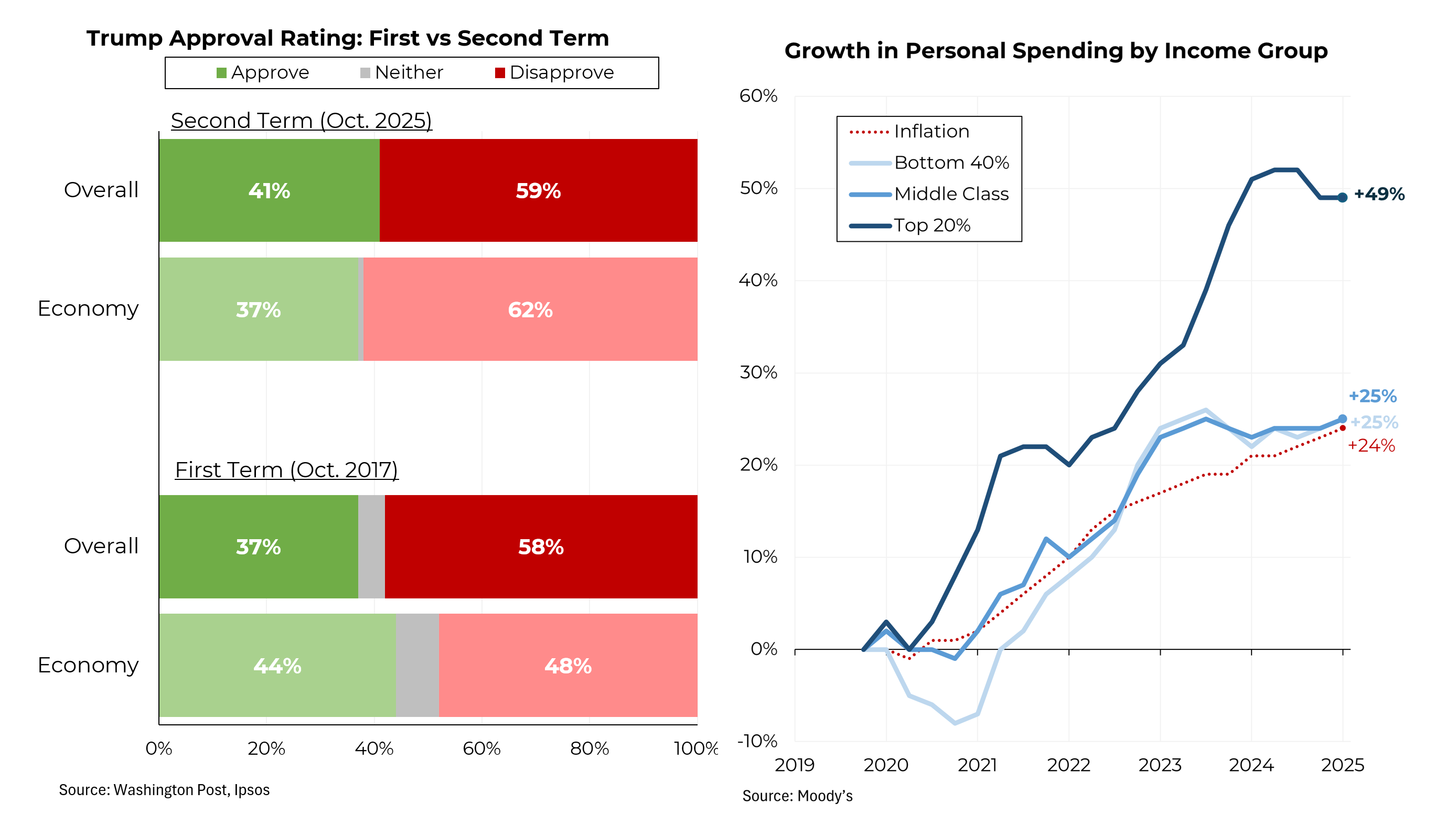President Biden unveiled his 2024 budget on Thursday and while the plan has no chance of being enacted by a divided Congress, it provides a useful point of comparison to Republican ideas that have been mooted in recent weeks. (While the Republicans have yet to release a formal budget proposal, the Republican Study Committee, which includes 173 of the 222 Republican members of the House of Representatives, has been pushing one since June.)

The difference between the Democratic and the Republican visions for the role of government is striking. While the Republicans would sharply reduce the size of the federal government (relative to the size of the economy), Biden would modestly increase it. At present, Washington spending amounts to just under 25% of gross domestic product. Even as Covid-related spending rolls off, spending would rise slightly to (just over) 25% of GDP a decade from now. In contrast, the Republican plan would have spending fall to about 17% of GDP. Those two visions almost exactly bracket the 50 year spending average of 21% of GDP.
On the revenue side, the gap is smaller. While Biden has proposed significant tax increases, projected increases in the size of the economy would keep revenues at the current 20% of GDP while Republicans eschew tax increases, resulting in a fall in revenues to 17.6%, almost exactly the same as the 50 year average.

In order to put forward a budget that would eliminate the deficit in 10 years, the RSC proposes massive cuts in many spending programs, especially compared to what the Biden plan proposes. While its changes to Social Security are relatively small on paper (the plan would gradually raise the retirement age from 67 to 70), relative to Biden’s plan, it would cut Medicare by 16% and Medicaid by a whopping 41% through massive reductions in federal matching funds, cutting funding for the Child Healthcare Insurance Program, and lowering subsidies for Affordable Care Act plans. (Both CHIP and the ACA are partly administered through Medicaid.)
(Note that House Speaker Kevin McCarthy has subsequently ruled out cutting Medicare, Social Security, and the defense budget, which would make achieving a balanced budget nearly impossible.)
Other “mandatory” spending programs, like food stamps, farm subsidies, and spending on veterans would be cut by a still larger 67%. All other discretionary spending – from national parks to the Food and Drug Administration – would be reduced by 45%. Only defense would enjoy a larger increase under the Republicans than under the Democrats.

Republicans often try to paint Biden as a champion of higher federal deficits and more borrowing. But even excluding Covid-related spending, Biden’s record on incurring debt is far better than President Trump’s was. Looking solely at policies championed by each president, Trump’s initiatives added $4.9 trillion of debt over the following decade. By comparison, Biden’s changes have added $2.5 trillion over a similar period. And if the new Biden plans were to be enacted, the net effect of the Biden presidency would be to reduce the debt by $500 billion from what it otherwise would have been.





